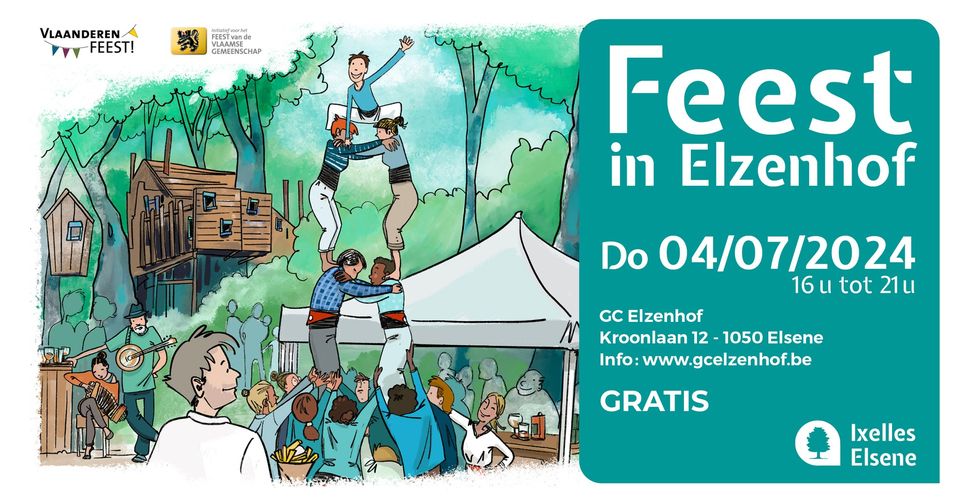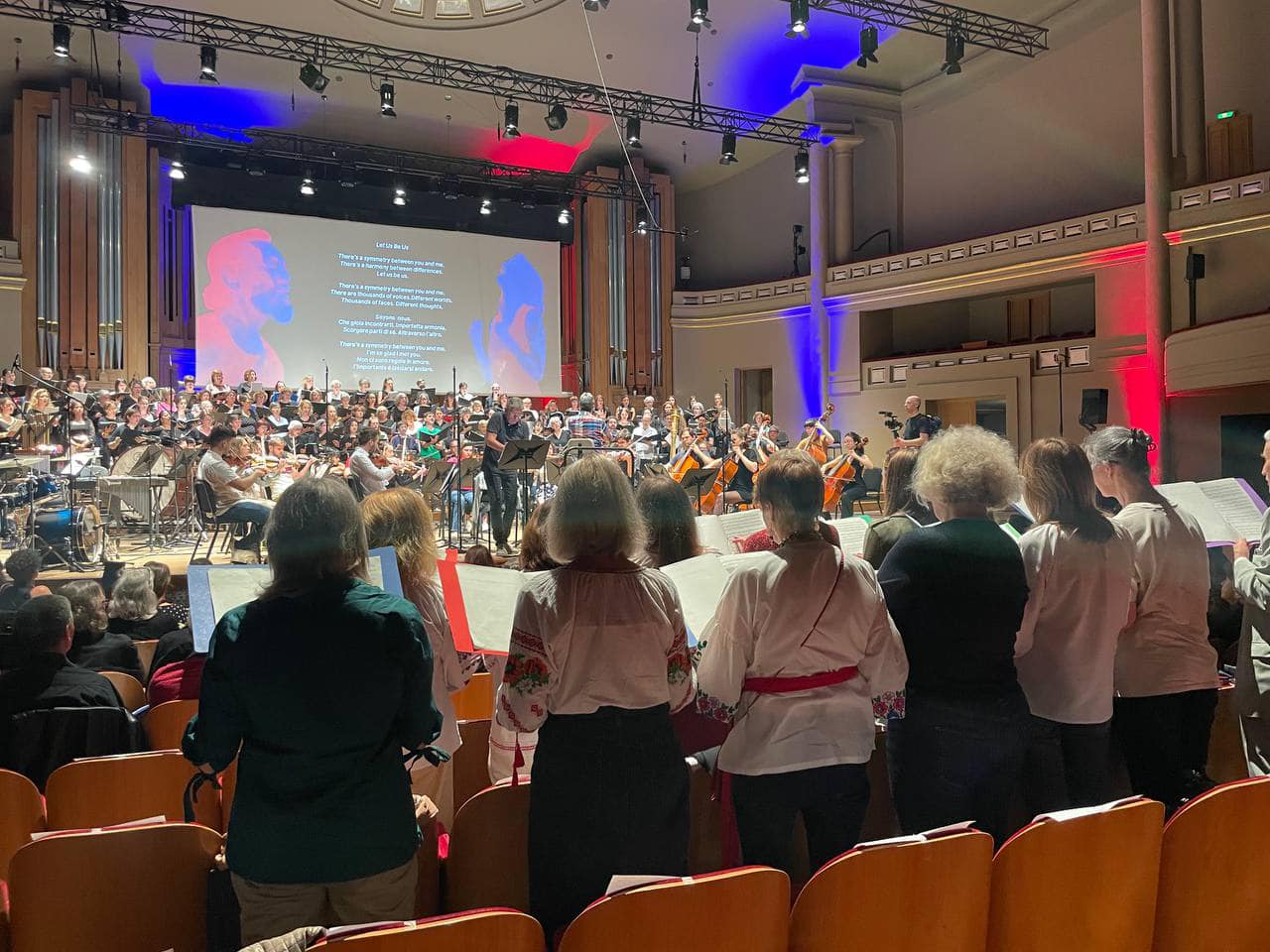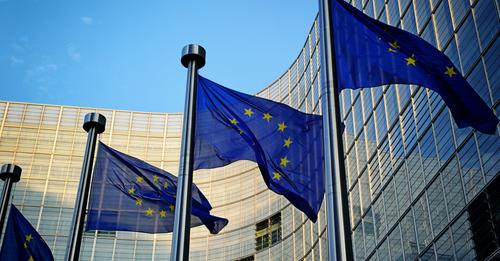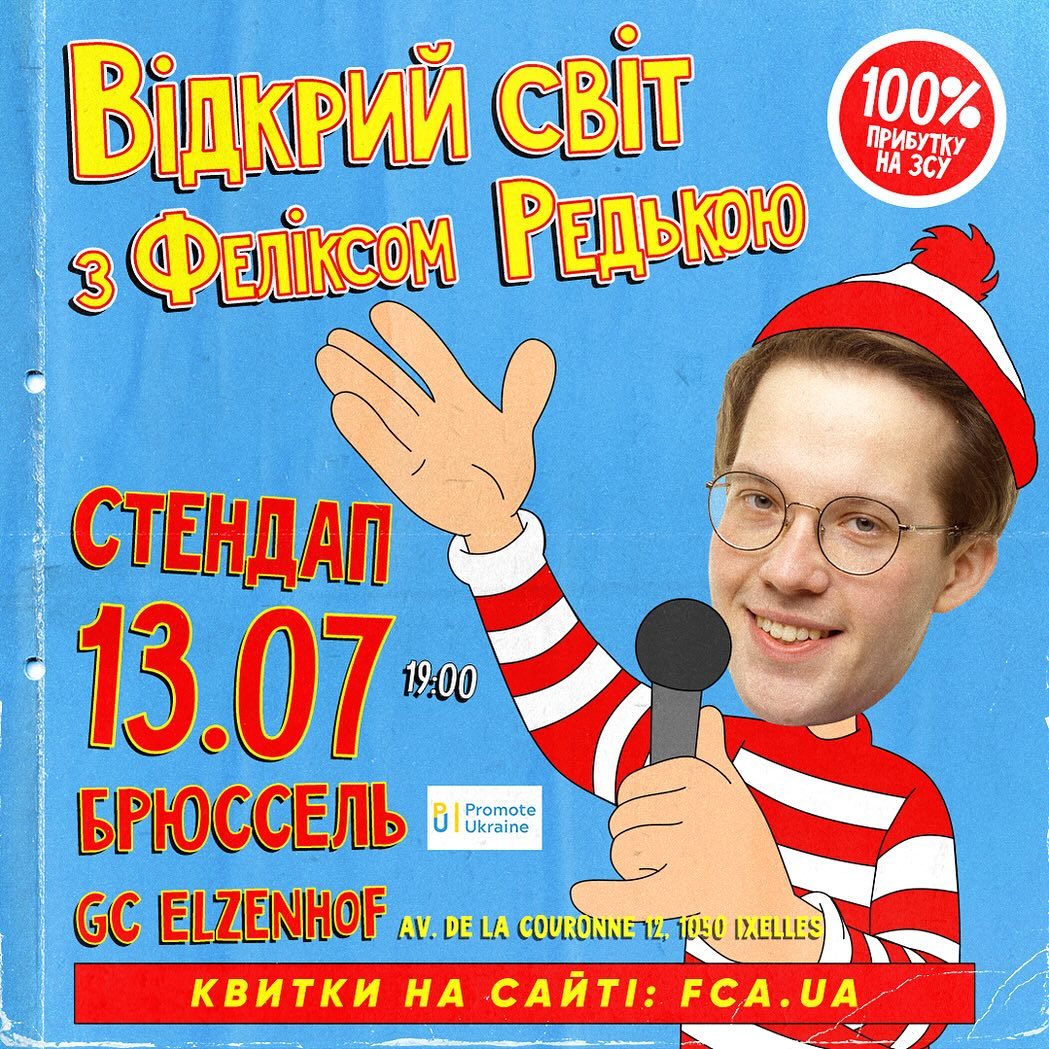When thinking about Ukrainian culture many things come to mind: stunning churches, beautiful traditional costumes, folklore music, and much more. Rich, traditional culture is a big part of Ukrainian national identity and something Ukrainians are very proud of.
What is often overlooked, however, is the fact that culture is not static; it is continuously developing.
The younger generation is the future of the country and has its own, unique characteristics and mentality, which cannot be compared to any other youth in Europe. Young Ukrainians spend a big part of their youth, if not even their entire youth, in the middle of political instability and war, torn between breaking free from Soviet and Russian influence and moving towards a European future – all the while trying to live the normal life of an adolescent. Today, the mark that the political situation is leaving on the culture of younger generations shows in many different ways. However, there is one remarkable movement that managed to rise from within the Ukrainian youth, through the devastation and uncertainty the young people were facing, to an internationally renounced phenomenon, which many consider the country’s “business card” towards young Europeans: Ukraine’s alternative club culture.
Young Ukrainians spend a big part of their youth, if not even their entire youth, in the middle of political instability and war, torn between breaking free from Soviet and Russian influence and moving towards a European future – all the while trying to live the normal life of an adolescent.
At first, it sounds almost banal that something like techno parties or raves have such cultural significance. Every young person enjoys parties and likes to celebrate, right?
This new stream, however, implies so much more than just that; it is more political than one might think. Through its authenticity and rawness, it has the ability to bring young people from all over Europe together and spark interest and curiosity towards the Ukrainian youth from the world outside of Ukraine.
In order to fully understand this phenomenon, one has to look at its origins. Throughout the Maidan protests and Revolution of Dignity, the young generation in Kyiv in particular was facing more and more challenges. Young people with their entire life in front of them and who saw their future in being part of the European Union suddenly found themselves in a new reality. With the annexation of Crimea and the beginning of war in the Donbas region, more and more young people in Ukraine started developing a strong sense of national identity and pride through which the Ukrainian youth grew closer together. While being practically forced to deal with these challenges, the young generation only wanted one thing: to enjoy a normal life and escape the challenges of political realities.
However, the Revolution of Dignity brought a significant change to Kyiv’s everyday life. Cultural life almost came to a standstill and the need for parties and entertainment continuously grew. Changes took place within the structures of the local nightlife economy. With economic growth slowing by 6.8 percent in 2014 and the hryvna losing two-thirds of its value as a currency, sustaining nightlife was no longer affordable. Difficulties also arose for local DJs: there were not enough clubs and the technical equipment was mostly poor. In addition, the DJs’ expenditure on music would not be in proportion to the fees. This status quo caused a new wave in the local scene. The political situation and the unrest in the country had a unifying effect on organisers, promoters, musicians and cultural workers. The Cxema series of events, for example, is symbolic of Kyiv’s new techno scene. It receives great international media attention and worked from the beginning with architects, designers, and art critics, representing a communication platform for them. It was founded shortly after the Maidan revolution by Slava Lepsheev as cultural life was diminished. This filled a vacuum and satisfied the need of young people for celebrating life. Due to the economic crisis and inflation, local promoters could not afford to invite foreign artists – with the result that the talent of the Ukrainian producers and DJs was discovered. To date, Cxema mainly works with local artists. On the one hand, this supports the local scene and saves financial resources which, on the other hand, can flow into other areas such as, for example, visualisation. Discovering and promoting Ukrainian artists shows that one can find great potential within its own borders without having to look to other countries for talent. This is crucial for the young generation’s development of pride for its own national background and building a strong sense of belonging. Quality standards are redefined: “Made in Ukraine” becomes cooler than ever.
The political situation and the unrest in the country had a unifying effect on organisers, promoters, musicians and cultural workers.
Post-industrial and remote urban spaces, such as disused factories, skate parks, garages, bridges, or old cinema pavilions, are used as event venues. While there were no financial means, organisers became creative and used these unusual locations doing everything themselves. While the first event had only around 100 visitors and subsequent events were constantly threatened with closure by local authorities, the organisers now count up to 2000 visitors. The Cxema events are no longer just focused on the Ukrainian capital; they have already been held throughout European cities and even in the supposedly best club in the world: The Berghain in Berlin.
The Cxema case shows vividly how the young Ukrainian generation is taking matters into its own hands in times of economic crisis and cultural stagnation and is doing extraordinary things without owning much. Cxema is no longer just a rave, it is an influential leader and a quality brand in the global electronic music scene.
Another highlight of Kyiv’s techno scene is the club and cultural area called the Closer. It is located on the outskirts of the Podil district in the city’s industrial area, surrounded by forest and near the Dnepr River. The Closer was previously an unused factory building in a very bad, absolutely unusable condition. But that’s why the rent was very cheap, so that the Closer was founded around the same time as the Maidan Revolution in November 2013 by a network of friends. The somewhat secluded and natural environment is a plus: outside, the Closer has a dance terrace for after-hours and a complete “playground” with many corners and niches, reminiscent of a “fairy-tale forest.” This is a perfect escape from everyday life and safe space for exchange and inspiration.
In addition to weekend parties, the Closer hosts jazz concerts, educational lectures on music, exhibitions, and discussions. It additionally houses a record store and a shop selling clothing by Ukrainian designers, a gallery, a tea garden, a radio station, a tattoo studio, and a vegetarian restaurant. There are also two major festivals on the site of the closer in summer – Strichka and Brave! Factory, which are the largest Ukrainian festivals of their kind. The Closer is more than a club – it is an entire ecosystem where people can network, learn, celebrate, and relax. In seven years, the collaboration of creative, progressive Ukrainians has turned it into the best club in Eastern Europe, as The Guardian called it in early 2020.
The Cxema case shows vividly how the young Ukrainian generation is taking matters into its own hands in times of economic crisis and cultural stagnation and is doing extraordinary things without owning much.
These two examples were just the beginning of an entire cultural wave which spread throughout the entire country and evolved into the equivalent of the Zeitgeist of the young generations.
It is a mirror of the young Ukrainian generation: dynamic, open-minded, progressive – with a view to Europe and at the same time proud of its own national background.
By the end of 2017, the Kyiv Biennale addressed the current challenges and signs of destabilisation in Ukraine and the EU with the motto “The Kyiv International.” The focus was laid on modernist concepts to think and invent social alternatives and thus bring about social change. Part of this biennial was an exhibition called “Dance, Dance, Dance,” which has critically examined the new rave culture in Kyiv since the Euromaidan. The curator of the exhibition, Sergiy Klimko, described this cultural phenomenon as the business card of the city for young people, because it has become well known throughout Europe and is referred to as the “New Berlin” based on the flourishing techno scene of the nineties with its own unique twist.
When trying to understand the Ukrainian youth, one has to understand first what is important to them. This cultural stream emerged from the wish to escape reality and to simply have a good time, which later evolved into a political statement of being a new, strong generation that does things completely differently.
Through extensive media coverage by many international outlets, this cultural phenomenon and its events gained international popularity. Today, thousands of young people from all over Europe travel to Ukraine to experience it first-hand. By interacting with young Ukrainians, they get an image of what Ukraine really is like – better than international news, stories on the Internet, or politicians could ever portray. They see a generation that is holding closely together and supports one another, values their freedom above everything, and is highly educated and welcoming.
When trying to understand the Ukrainian youth, one has to first understand what is important to them. This cultural stream emerged from the wish to escape reality and to simply have a good time, which later evolved into a political statement of being a new, strong generation that does things completely differently.
The future of Ukraine is like its youth: progressive, educated, and displaying huge potential to bring value to the European Union.
Juna Zimmer, Postgraduate Cultural Sciences, Leuphana University of Lüneburg;
Rika Zimmer, Communication and Media, Erasmus University Rotterdam.






 UA
UA FR
FR DE
DE




